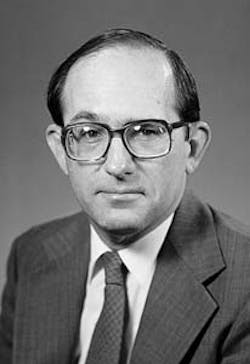Carbon black oil exports go to Asia
Vincent J. GuercioAlthough Western Europe remains a steady consumer of the U.S. carbon black oil (CBO) supply, Asia/Pacific consumption has grown more than 20% annually since 1987. A survey of CBO demand and supply in the U.S., Asia/Pacific, and Western Europe reveals this trend.
CTC International
Montclair, N.J.
CBO purchasing is the largest expense in the production of carbon black. The feedstock accounts for 30-35% of the carbon black sales price. These raw materials are heavy aromatic byproducts synthesized during the thermal processing of petroleum and coal. The three major CBO sources are:
- Decant oil from catalytic cracking of gas oils to produce gasoline
- Coal tar oils, such as creosote, from coal coking or gasification
- Ethylene tar from steam cracking of naphthas and gas oils to produce ethylene.
World CBO demand/supply
World consumption of carbon-black feedstock was 11,177,000 metric tons in 1996. The U.S., Europe, and Japan consumed 56% of the world total.In 1996, world CBO consumption was 58% decant oil, 27% coal tar, and 15% ethylene tar (Table 1 [60,173 bytes]). The U.S. produced over 5 million tons, or 48%, of the world's CBO. Because nearly half of the U.S. sales are exported, the U.S. accounted for only 25% of world consumption.
At the other extreme, the Asia/Pacific region consumed 34% of the world's CBO and had to import 38% of its requirements. South Asia (India, Indonesia, Thailand, and Malaysia) imported 92% of its needs.
U.S. CBO
Decant oils account for 95% of U.S. CBO production and is the only type of CBO exported to the Asia/Pacific carbon black industry. Fluid-catalytic cracking (FCC), which converts atmospheric and vacuum gas oils to higher-priced gasoline and middle-distillate fuels, is the main source of decant oil. In the U.S., FCC units operate at high severity to maximize gasoline, which results in very heavy and aromatic decant oil.Decant oil is sold as either resid cutter stock or CBO, depending on which product is more valuable in the market to which the decant oil is being sold.
Fig. 1 [76,121 bytes] shows a history of U.S. CBO demand. Estimated 1997 demand is up 6% from 1996 because exports have risen 12%. In 1997, U.S. CBO exports are expected to equal domestic consumption of 2.8 million metric tons. Average growth in U.S. CBO sales have been 5%/year over the past 10 years, driven mainly by a 22% annual growth in exports to the Far East.
Asia/Pacific CBO
Asia does not produce as much CBO as the U.S. because its FCC operations are lower in severity and produce less decant oil. It has a huge fuel-oil market and low decant-oil production.Domestic decant oil is used as a viscosity cutter, particularly for low-sulfur waxy residues (LSWR) available in Singapore. Decant oil is so much in demand that importing high-sulfur U.S. decant oils for LSWR can be economical. If any domestic decant oil is sold as CBO, an Asian refiner would have to use a high-priced middle distillate to cut the resid.
Most new Asian carbon black capacity uses U.S. CBO. Table 2 [80,557 bytes] shows a breakdown of Asia/Pacific furnace-black capacity. Annual growth has averaged 4-6%. In the period between 1994 and 1996, capacity surged by 408,000 metric tons/year, or 9% annually. Major additions occurred in Korea (175,000 metric tons year), Thailand (85,000 metric tons/year), Indonesia (55,000 metric tons/year), and India (53,000 metric tons metric kilotons/year).
Fig. 2 [89,940 bytes] shows the history of the sources of Asia/Pacific CBO supply. The U.S. has provided almost all of the increased CBO demand since 1988. U.S. CBO was only 10% of Asian consumption in 1987, but is projected to provide about 39% in 1997.
Before 1988, Asia was supplied only by West Coast refiners, but since then, Gulf Coast CBO shipments have grown about 42%/year.
In 1996, several turning points occurred in Asia:
- Gulf Coast exports to Asia (756,000 metric tons) exceeded those to Western Europe (717,000 metric tons).
- Gulf Coast exports to Asia (756,000 metric tons) exceeded those from the West Coast (670,000 metric tons).
- More U.S. CBO went to South Asia (744,000 metric tons) than to Western Europe (717,000 metric tons).
Table 4 [66,916 bytes] summarizes 1996 CBO demand for major Asia/Pacific countries and areas according to type and source. Japan and China are heavily dependent upon coal-tar based oils, while Korea and Southeast Asia rely on U.S. decant oils. India did not begin importing CBO until 1992, but now about 85% of its consumption comes from the U.S.
Western Europe CBO
Like Asia, European refiners' product mix is slanted towards diesel and heavy-fuel oil, rather than gasoline. Thus, most European countries depend on U.S. imports to meet their CBO demand.Table 5 [54,613 bytes] shows a history of recent U.S. Gulf Coast CBO exports to each Western European country. During the 1980s, France and Italy were the largest importers of U.S. CBO. Today, they have been displaced by Asia/Pacific countries. Table 6 [18,171 bytes] lists the largest U.S. CBO importers today.
Table 7 [64,827 bytes] summarizes 1996 CBO demand for the major Western European countries according to type and source. Germany is heavily dependent upon coal-tar based oils, while France and Italy rely on U.S. decant oils.
Based on a presentation at Carbon Black '97: Perspective in Asia-Pacific Conference, Dec. 8-10, 1997, Phuket, Thailand.
The Author
Vincent J. Guercio is president of CTC International, a petrochemical consulting company formerly known as Chemical Technomics Co. Prior to forming Chemical Technomics, Guercio worked with Mobil Corp., CE Lummus, and Foster Wheeler Corp. He provides business and technical advice about ethylene-plant byproducts with an emphasis on the interactions that occur at the refinery, LPG, and petrochemical interfaces. Guercio holds a BChE in chemical engineering from Catholic University of America, Washington D.C., and did graduate work in chemistry at Princeton University, Princeton, N.J.
Copyright 1998 Oil & Gas Journal. All Rights Reserved.

